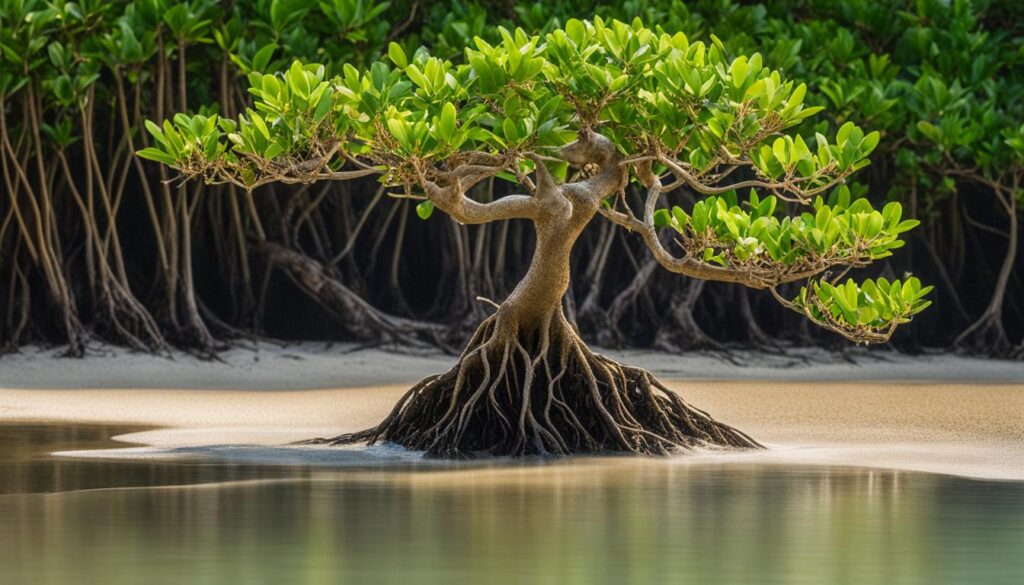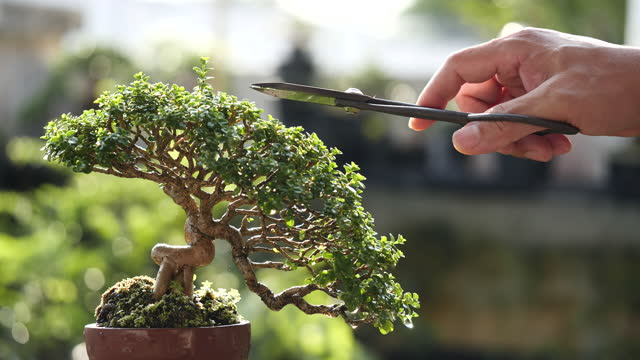If you’re fascinated by the unique beauty and allure of these miniature trees, you’ve come to the right place. In this guide, we will take you on a journey through every aspect of cultivating Mangrove Bonsai Trees, from understanding their distinctive features to providing the essential care they need.
But why choose a Mangrove Bonsai Tree? Well, these trees offer a captivating aesthetic that stands out in the world of bonsai. With their intricate root systems and delicate foliage, they create a serene oasis wherever they are placed. Not only that, but they also bring a sense of tranquility and harmony to your space, making them a perfect addition to your home or office.
Throughout this guide, we will provide you with step-by-step instructions on how to grow and care for your Mangrove Bonsai Tree, ensuring its health and longevity. We will cover everything from selecting the right species and varieties to finding the ideal soil composition and potting requirements. We will also guide you through watering techniques, maintaining the right balance of light and temperature, and even pruning and maintenance tips to shape your bonsai mangrove just the way you desire.
Introduction to Bonsai Mangroves
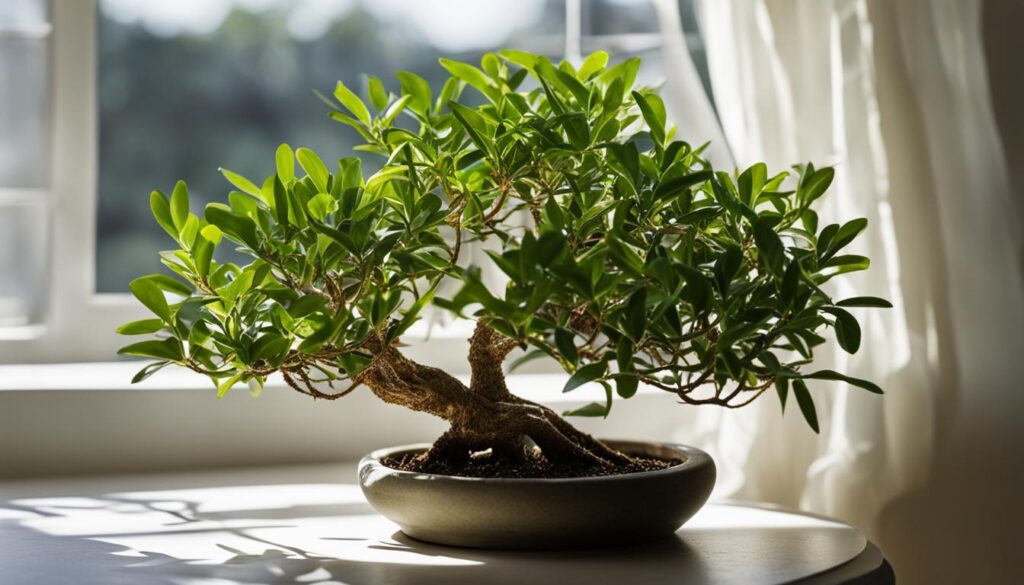
In this section, we will provide an introduction to Bonsai Mangroves. Explore the ancient art of bonsai and learn how mangroves can be transformed into miniature living sculptures. Discover the history and symbolism behind bonsai mangroves and gain an appreciation for their unique aesthetic.
“Bonsai is not just about growing trees in pots; it is an art form that allows us to connect with nature on a profound level.”
Bonsai is a traditional Japanese art form that involves cultivating and shaping miniature trees. The word “bonsai” translates to “tray planting,” and the practice dates back over a thousand years. In bonsai, trees are carefully trained and pruned to mimic their full-sized counterparts, resulting in stunning miniature landscapes.
Bonsai mangroves are an exquisite variation of traditional bonsai trees. They capture the beauty and essence of mangroves, creating mesmerizing natural scenes in miniature form. These living sculptures bring the serenity and allure of mangrove forests into your space, allowing you to appreciate their unique charm up close.
The art of bonsai holds deep symbolism, representing harmony, balance, and the transience of life. By cultivating a bonsai mangrove tree, you engage in a meditative process that fosters patience, mindfulness, and a deep connection with nature.
Through the ancient practice of bonsai, you can create a serene oasis in your home or garden, immersing yourself in the beauty and tranquility of these captivating miniature trees. As we delve deeper into the world of bonsai mangroves, you will discover the secrets to their cultivation and care, allowing you to embark on a rewarding journey of artistic expression and natural harmony.
Understanding the Unique Features of Mangrove Bonsai Trees
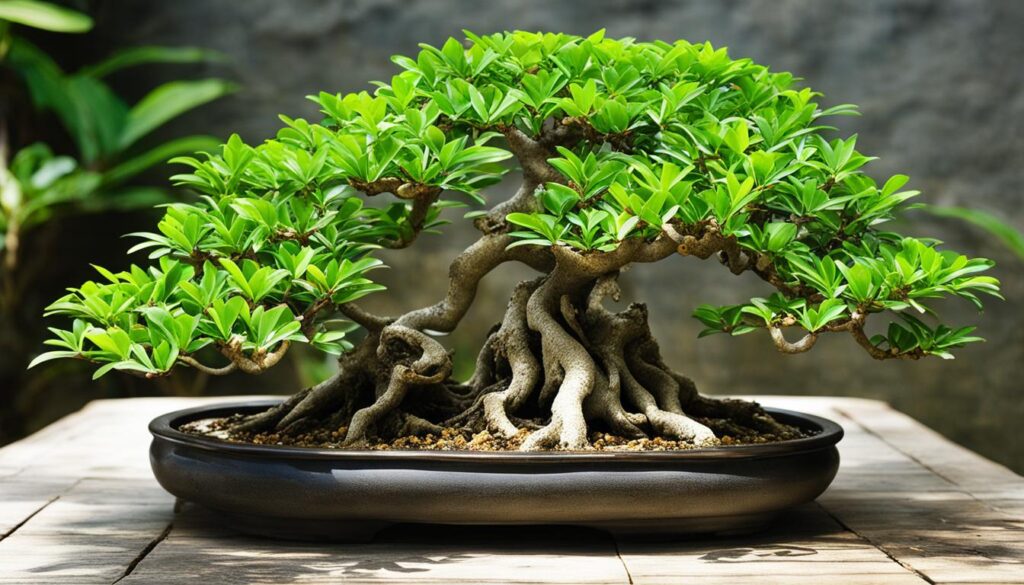
In this section, we will delve into the unique features of Mangrove Bonsai Trees. These captivating miniature trees possess a distinctive aesthetic that sets them apart from other bonsai varieties. Let’s explore their charm and discover the ecological importance and environmental benefits they offer.
Defining the Mangrove Bonsai Aesthetic
Mangrove Bonsai Trees are known for their intriguing appearance. With their intricate root systems and small, delicate leaves, they create a sense of tranquility and serenity. The delicate balance between the miniature size and the complex structure of the tree invokes a feeling of awe and wonder.
When cultivating a Mangrove Bonsai Tree, attention to detail is crucial. Each branch, root, and leaf contributes to the overall aesthetic of the tree. The meticulous shaping and pruning process allows you to create unique forms and styles, bringing out the artistic aspect of bonsai cultivation. Whether you prefer a windswept look or a cascading design, the possibilities are endless.
Ecological Importance and Environmental Benefits
Aside from their aesthetic appeal, Mangrove Bonsai Trees play a vital role in the ecosystem. These trees have several environmental benefits that make them a valuable addition to any space:
- Improved Air Quality: Mangrove Bonsai Trees act as natural air purifiers by absorbing carbon dioxide and releasing oxygen. This process helps to improve air quality, creating a healthier environment for you and those around you.
- Shoreline Stabilization: The extensive and dense root systems of Mangrove Bonsai Trees provide natural protection against coastal erosion. Their roots help stabilize shorelines, preventing soil erosion and protecting coastal communities.
- Habitat for Various Species: Mangrove Bonsai Trees serve as critical habitats for numerous species of birds, insects, and marine life. The dense foliage and intricate root systems provide shelter and nesting grounds, promoting a diverse ecosystem.
As you can see, Mangrove Bonsai Trees offer not only visual beauty but also environmental benefits. By cultivating these miniature trees, you contribute to the well-being of the planet while creating a captivating oasis in your space.
Selecting Your Mangrove Bonsai Tree: Species and Varieties
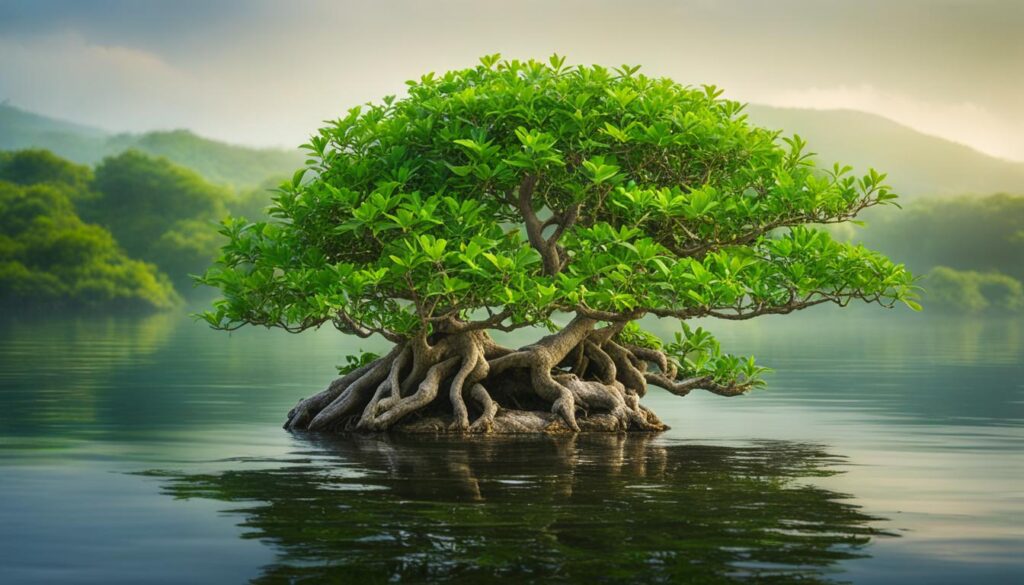
Choosing the right species and variety of Mangrove Bonsai Tree is crucial for successful cultivation. Each species has its own unique characteristics and requirements, so it’s important to consider these factors before making a selection. Here are some popular species of mangrove bonsai trees:
- Rhizophora mangle: Commonly known as the Red Mangrove, this species features distinctive prop roots that provide stability and support.
- Avicennia germinans: Also called the Black Mangrove, this species has pencil-like pneumatophores that allow it to absorb oxygen in waterlogged environments.
- Laguncularia racemosa: The White Mangrove, known for its smooth white bark, thrives in brackish or saltwater habitats.
- Bruguiera spp.: This genus includes species like Bruguiera cylindrica and Bruguiera gymnorrhiza. These mangrove bonsai trees have visually striking aerial roots and intricate branching patterns.
When selecting a mangrove bonsai tree, it’s essential to choose a healthy individual that shows no signs of disease or distress. Look for trees with vibrant green leaves, strong root systems, and a well-structured trunk. Avoid trees with yellowing or wilted leaves, weak roots, or any signs of pests or disease.
To ensure the quality of the mangrove bonsai tree you purchase, it’s recommended to buy from reputable sellers who specialize in bonsai trees. These sellers often have a wide selection of mangrove bonsai trees for sale, allowing you to choose the perfect specimen for your collection.
Creating a serene oasis in your space with a mangrove bonsai tree starts with selecting the right species and variety. Take the time to research and choose wisely, and soon you’ll have a captivating miniature tree that brings beauty and tranquility to your home or garden.
Mangrove Bonsai Tree Care Essentials
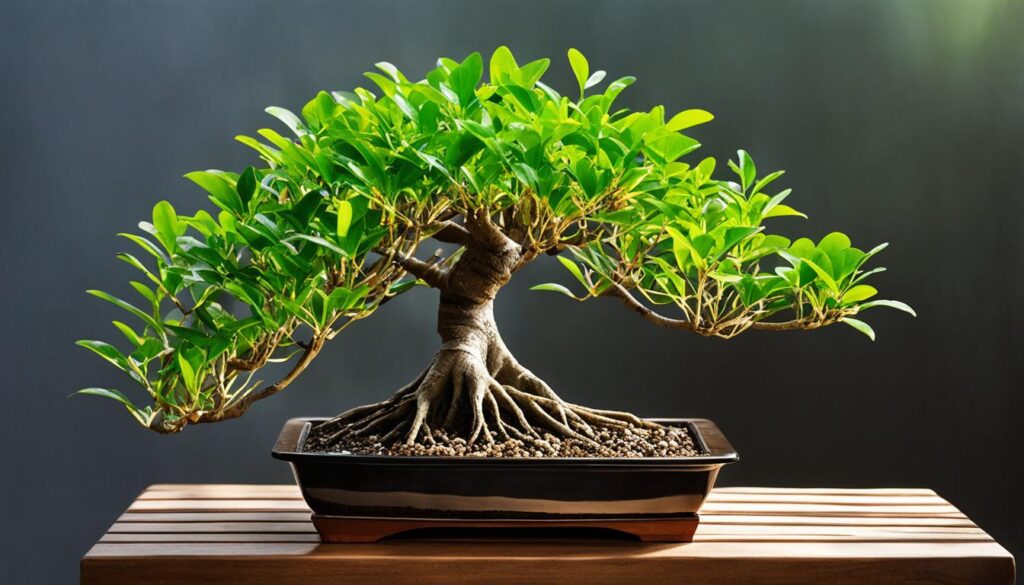
Proper care is essential for the health and vitality of your Mangrove Bonsai Tree. Follow these guidelines to ensure your Mangrove Bonsai Tree thrives.
Optimum Soil Composition and Potting Requirements
The soil composition plays a crucial role in the growth and development of your Mangrove Bonsai Tree. It is recommended to use a well-draining soil mix that allows for proper air circulation and moisture retention. Consider a mixture of organic-rich soil, such as peat moss or compost, with coarse sand or perlite to improve drainage. Additionally, ensure that your pot has adequate drainage holes to prevent waterlogging.
Watering Techniques for Healthy Growth
Proper watering is vital for maintaining the health of your Mangrove Bonsai Tree. As a general rule, water your bonsai when the top inch of the soil feels slightly dry to the touch. Avoid overwatering, as it can lead to root rot and other problems. When watering, thoroughly soak the soil, allowing the excess water to drain out completely. Remember to adjust the watering frequency based on environmental factors such as humidity and season.
Light and Temperature: Finding the Right Balance
Mangrove Bonsai Trees thrive in bright, indirect light. Place your bonsai near a window where it can receive ample sunlight, but avoid exposing it to direct sunlight, as it can scorch the leaves. If natural light is limited, supplement it with artificial grow lights. Temperature-wise, Mangrove Bonsai Trees prefer warm and tropical conditions. Aim for a temperature range of 70-85°F (21-29°C) during the day and 60-70°F (15-21°C) at night. Avoid placing your bonsai near drafts or extreme temperature fluctuations.
How to Grow Mangrove Bonsai Tree: A Step-by-Step Process
Embark on the journey of growing your very own Mangrove Bonsai Tree with our comprehensive step-by-step process. Whether you’re an experienced bonsai enthusiast or a beginner looking to try your hand at cultivating these unique trees, this guide will provide you with the knowledge and guidance needed for success.
1. Germination and Seedling Care: Start by selecting high-quality mangrove bonsai tree seeds. Soak the seeds in water for 24 hours to encourage germination. Plant the seeds in a well-draining bonsai soil mix, ensuring they are barely covered. Maintain a consistently moist environment by misting the soil regularly. Place the pot in a warm location, ideally around 80°F (27°C), and provide indirect sunlight.
2. Nurturing the Seedlings: Once the seedlings emerge, continue to provide them with proper care. Keep the soil moist, but avoid overwatering, as excessive moisture can lead to root rot. Place the seedlings in a location that receives bright, indirect sunlight for approximately 12-16 hours a day. Maintain a warm temperature range of 70-85°F (21-29°C) to promote healthy growth.
3. Pruning and Training: As the seedlings develop, prune and shape them to achieve the desired bonsai aesthetic. Use sharp bonsai pruning shears to carefully remove unwanted branches or leaves. Additionally, use wire to gently guide the growth and create the desired form. Regular pruning and training will help cultivate a well-formed and balanced Mangrove Bonsai Tree.
4. Watering and Fertilizing: Ensure that the soil remains slightly moist but not waterlogged. Water the bonsai thoroughly, allowing excess water to drain away. Avoid letting the soil dry out completely, as this can be detrimental to the health of the tree. Apply a balanced bonsai fertilizer at half-strength every two weeks during the growing season to provide essential nutrients.
5. Light and Temperature: Mangrove Bonsai Trees thrive in bright, indirect sunlight. Find a location where your bonsai receives at least 6-8 hours of sunlight each day. Protect the tree from extreme temperature fluctuations, as the ideal range for growth is between 70-85°F (21-29°C).
6. Potting and Repotting: Repot your Mangrove Bonsai Tree every 1-2 years to provide fresh soil and promote root health. Choose a bonsai pot that allows for proper drainage and provides enough space for the roots to grow. During repotting, trim any excessively long or tangled roots and adjust the position of the tree as needed.
By following these step-by-step instructions, you’ll be well on your way to cultivating a flourishing and beautiful Mangrove Bonsai Tree. Remember to observe and respond to the specific needs of your bonsai as it develops, ensuring it receives the proper care, attention, and love it deserves.
Pruning and Maintenance: Shaping Your Mangrove Bonsai
Pruning and maintenance are essential for shaping and maintaining the desired form of your Mangrove Bonsai Tree. Proper pruning techniques allow you to achieve the desired shape and style while promoting healthy growth. Additionally, regular maintenance ensures the overall well-being of the bonsai. In this section, we will explore when and how to prune your bonsai mangroves and provide valuable tips for preventing pests and diseases that may affect their health.
When and How to Prune Your Bonsai Mangroves
Pruning is a vital aspect of bonsai care that helps shape and refine the tree’s form. The timing and technique of pruning can greatly influence the tree’s health and appearance. When pruning your Mangrove Bonsai Tree, consider the following guidelines:
- Timing: Prune your bonsai mangroves during the tree’s dormant period, typically in the early spring or late winter. This allows the tree to recover quickly and stimulates new growth.
- Branch Selection: Identify and remove any undesirable branches that disrupt the overall form or compromise the tree’s health. Leave only the branches that contribute to the desired shape.
- Pruning Technique: Use sharp, clean bonsai shears to make precise cuts. Trim branches just above a leaf node or bud to encourage new growth in the desired direction.
- Thinning: To enhance the tree’s aesthetic, thin out overcrowded areas by removing excess branches or foliage. This allows better light and air circulation, promoting overall health.
Preventing Pests and Diseases in Mangrove Bonsai
Just like any other plant, Mangrove Bonsai Trees are susceptible to pests and diseases. However, with proper preventive measures, you can protect your bonsai from these potential threats. Here are some essential tips:
- Cleanliness: Maintain a clean environment for your bonsai by removing fallen leaves, dead branches, and debris that may harbor pests or diseases.
- Monitoring: Regularly inspect your bonsai for signs of pests, such as visible insects, webs, or leaf damage. Also, be vigilant for symptoms of diseases, such as discoloration, wilting, or unusual growth patterns.
- Quarantine: If you suspect any infestation or disease, isolate the affected bonsai to prevent spreading to other plants in your collection.
- Natural Control: Utilize natural control methods, such as introducing beneficial insects or using organic pest control products, to manage pests without harming the tree.
- Proper Watering: Avoid overwatering, as excessive moisture can create a favorable environment for fungal diseases. Water your bonsai only when the topsoil feels slightly dry.
By following these pruning techniques and taking preventive measures against pests and diseases, you can ensure the health and beauty of your Mangrove Bonsai Tree. Now, let’s move on to the next section to explore where to buy quality Mangrove Bonsai Trees and how to identify reputable sellers.
The Joy of Cultivating Mangrove Bonsai Trees: Long-Term Benefits
Experience the immense joy and satisfaction that comes with cultivating and caring for your very own Mangrove Bonsai Trees. These captivating miniature trees offer a plethora of long-term benefits that will enhance your life in numerous ways.
First and foremost, tending to your Mangrove Bonsai Tree is an incredibly meditative practice. As you carefully prune, shape, and nurture your tree, you’ll find yourself immersed in a peaceful state of mind. The act of bonsai care allows you to connect with nature, providing a therapeutic escape from the stresses of everyday life. It is a calming ritual that helps you find balance and tranquility.
Furthermore, Mangrove Bonsai Trees bring an undeniable aesthetic beauty to any space. Their intricate foliage, delicate branches, and stunning root systems create miniature landscapes that add a touch of natural elegance to your home or office. Whether placed on a windowsill, desk, or mantelpiece, these bonsai trees become living art pieces that inspire and uplift.
Lastly, the long-term benefits of cultivating Mangrove Bonsai Trees extend beyond personal fulfillment. These trees play a vital role in the environment, offering numerous ecological advantages. They improve air quality by absorbing carbon dioxide and releasing oxygen, contribute to shoreline stabilization, and provide habitats for various wildlife species. By nurturing a Mangrove Bonsai Tree, you are contributing to a healthier planet.

